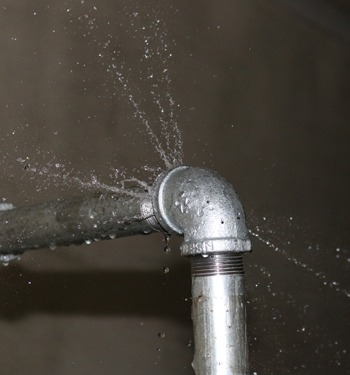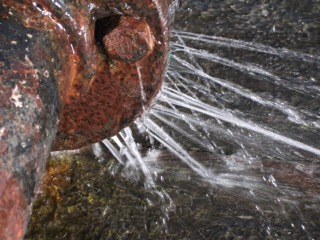This article which follows on the subject of How to install a dishwasher safely is definitely enjoyable. Have a go and make your own personal ideas.

A ruptured pipe is a significant emergency; you can only stand as you enjoy water you pay dearly to rejoin with the earth. In worse instances, you discover a swimming pool on your kitchen flooring, which is a fantastic journey hazard, particularly if you have youngsters around. If the pipe that ruptured was in your wall surfaces, bad news: you might require to repaint that whole area.
Exactly how can a tragedy like a burst pipe be protected against and taken care of? Well, by listening to your expert emergency plumbing professionals and complying with these regulations.
How do I understand when my pipelines have burst?
Changing water stress
Pipes do not just burst in a day. You might have seen that your kitchen tap or shower does not run immediately when you turn the faucet. It might stop for a few seconds and after that blast you with even more pressure than usual.
In other circumstances, the water might appear normal initially, after that decrease in stress after a few seconds.
Polluted water
Lots of people think a ruptured pipe is a one-way outlet. Rather the contrary. As water drains of the hole or wound in your plumbing system, impurities find their way in.
Your water may be polluted from the resource, so if you can, examine if your water container has any kind of problems. However, if your drinking water is supplied as well as cleansed by the local government, you need to call your plumber quickly if you see or smell anything funny in your water.
Puddles under pipes and sinks
When a pipe bursts, the outflow forms a puddle. It may appear that the puddle is growing in size, and no matter the number of times you mop the puddle, in a few minutes, there's another one waiting to be cleaned. Frequently, you may not be able to trace the puddle to any visible pipelines. This is an indicator to call a specialist plumber.
Damp wall surfaces and also water spots
Prior to a pipe bursts, it will leak, most times. If this persistent leaking goes undetected, the leakage might graduate into a wide gash in your pipe. One very easy means to prevent this emergency is to watch out for wet walls ad water discolorations. These water discolorations will certainly lead you right to the leak.
Untraceable dripping noises
Pipeline ruptureds can occur in the most unpleasant areas, like within concrete, inside wall surfaces, or under sinks. When your home goes silent, you may have the ability to listen to an irritatingly persistent dripping sound. Also after you've checked your shower head and also cooking area tap, the dripping might proceed.
Precious reader, the trickling might be coming from a pipe inside your wall surfaces. There isn't much you can do regarding that, except inform a specialist plumber.
Show up the Warm
Set up fans to blow heat right into chilly rooms. Maintain the garage door closed. If you have lowered water flow, heat one of the most prone pipes (generally in cellars and crawl spaces or near outside walls) with a hair dryer. Leave the tap on while you use warm. As you melt ice, the circulation will raise. To avoid pipelines from cold, insulate your wall surfaces.
Start Removing the Water
Get hold of the wipe, containers and a store vacuum to begin to eliminate the water due to the fact that you definitely do not desire it saturating into whatever else in your house. Plus, a fast clean up will certainly reduce the chances of something obtaining moldy.
What do I do when I detect a ruptured pipe?
Your water meter will certainly continue to run also while your water wastes. To reduce your losses, find the primary controls and transform the supply off. The water mains are an above-ground framework at the edge of your property.
How to Fix & Detect a Leaking Pipe
How Do I Know if a Pipe is Leaking?
Leak detection tests can help you determine if your pipe has a leak. Even if you don’t see an apparent leak, you should still conduct leak detection tests regularly to save water and money—and prevent major damage to your home.
- Water meter. It can be helpful to figure out what your usual water meter usage numbers are and then monitor them regularly. To monitor your meter, first, turn off all water faucets in your home. Check the meter and write down the numbers. In a few hours, check the meter again. If the numbers have changed, you have a leak.
- Water gauge. Use a water gauge to test your water pressure. Your showerhead should produce a certain amount of water pressure based on its model and design. If the pressure is lower than it is supposed to be for that specific showerhead, your home likely has a leak.
- Puddles. Look inside your bathroom, laundry, and kitchen sink cabinets. Puddles around the cabinets or around toilets, tubs, showers, and washing machines indicate the presence of a leaking pipe. You may also notice loose tiles, peeling or flaking paint, or mold caused by water accumulation.
- Napkin test. Even if you don’t see any puddles, you may still have a leak. You can test for water leaks in the bathroom, laundry, and kitchen by wiping below-sink connections with a napkin, paper towel, or piece of toilet paper. If it becomes damp, you probably have a leaking pipe under the sink.
- Discolored walls. Walls that are discolored—usually with brown or yellow stains—or bulging might mean that they have been impacted by water damage caused by a leaking pipe.
- Smell. A leaky pipe will create sitting water, and over time, that water may develop a musty smell. If your home smells musty, but you can’t locate the source, it may be due to a leak.
Steps for Fixing a Leaking Pipe
- A leaky drain can be remedied by tightening the pipe base, replacing the drain seal, caulking the rim, and tightening the pipe nut.
- Similarly, a leaking toilet pipe can be treated by tightening the packing nut. You may also need to replace the valve.
- A leaky faucet may just need tightening or replacement of the washers. If that doesn’t work, consider replacing your faucet.
- If your pipe has a hole in it, you may want to use a pipe leak sealer or pipe leak tape. This quick fix for water pipe leaks can also temporarily fix a copper pipe leak.
https://www.ahs.com/home-matters/quick-tips/how-to-tell-if-pipes-are-leaking/

We were shown that editorial on How to Install and Connect a New Dishwasher through an acquaintance on a different site. Are you aware of somebody else who is very much interested in the niche? Be sure promote it. Bless you for your time. Visit again soon.
Book Today!
Comments on “Quick-Response Plumbing: Tips for Identifying and Dealing With Ruptured Pipes”